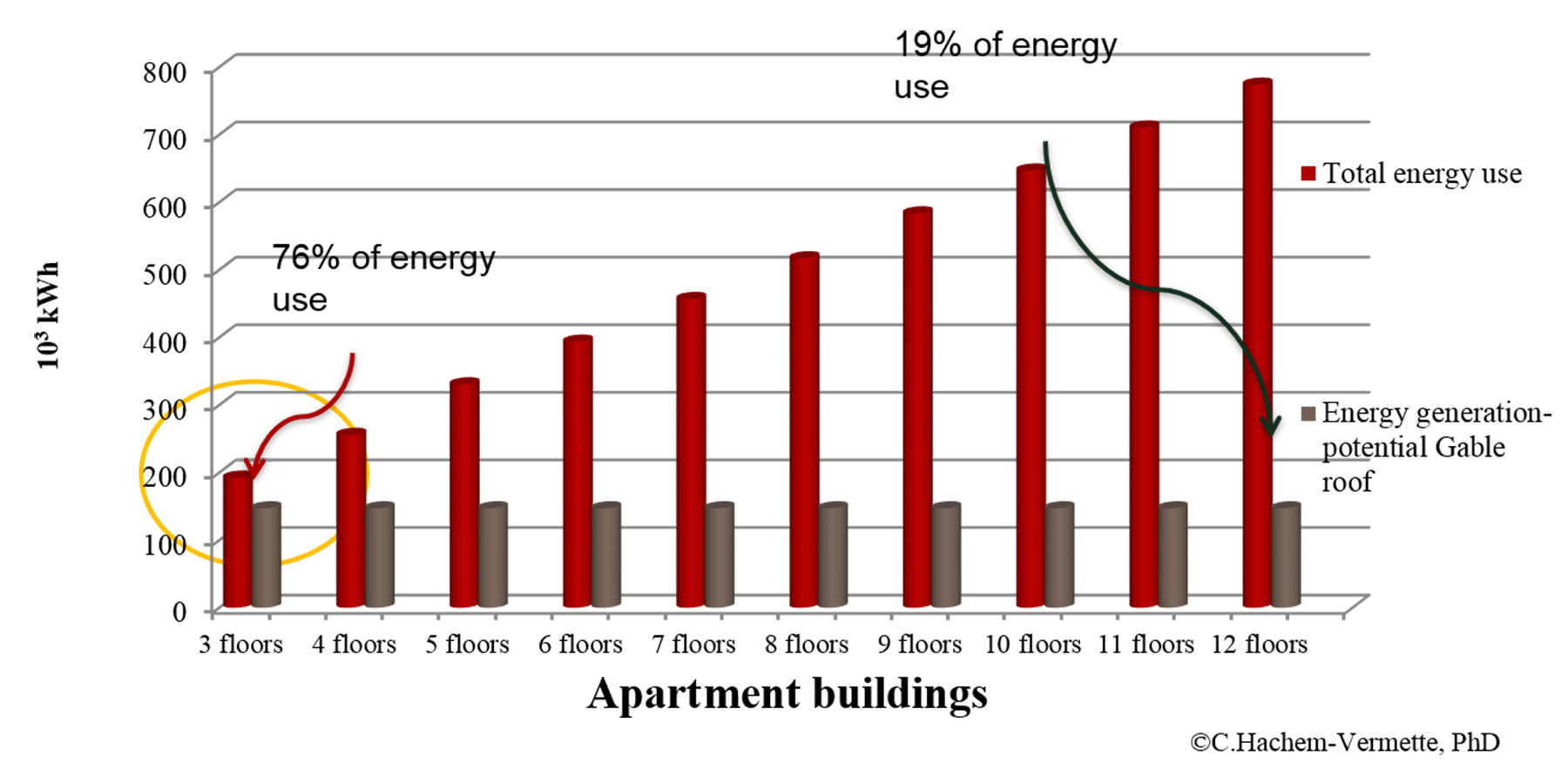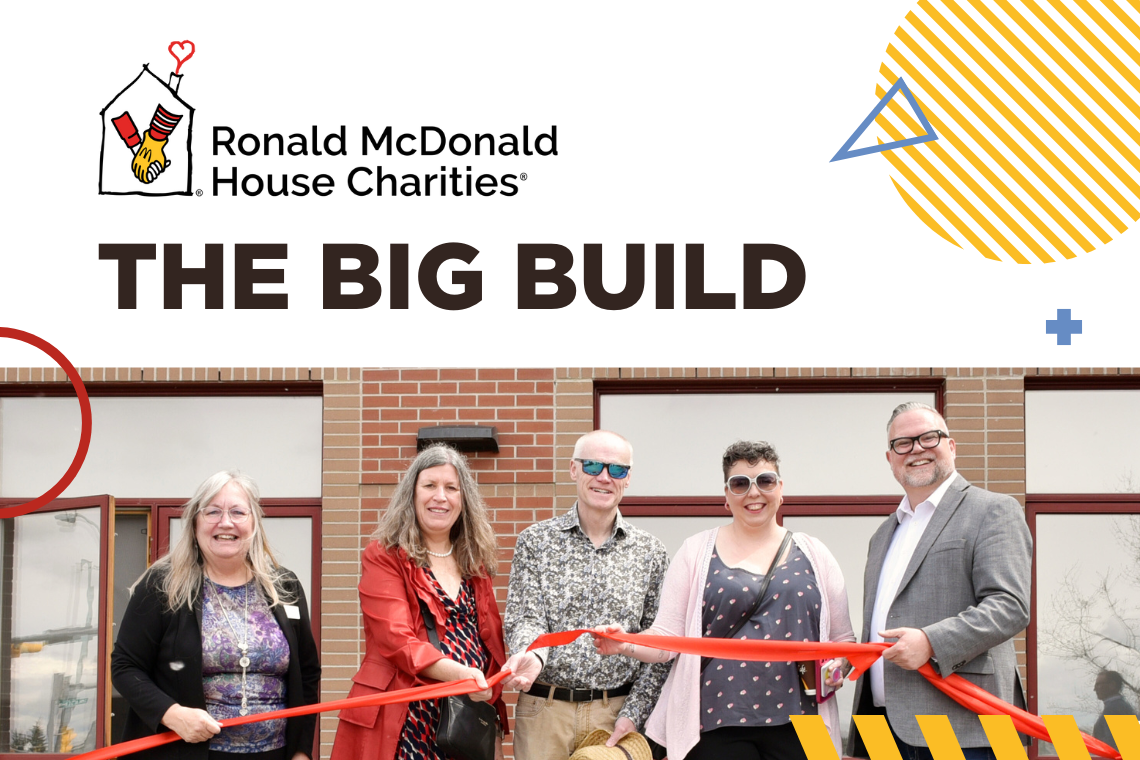
Dec. 16, 2016 | Gerald Vander Pyl
Reaching for the sun
University research looks at solar solutions to multi-storey challengesNew research at the University of Calgary could lead to condominium and apartment high-rises being retrofitted to become energy-efficient and green-energy-producing buildings.
Caroline Hachem-Vermette, an assistant professor of architecture in the Solar Energy and Community Design Lab at the University of Calgary's Faculty of Environmental Design, is looking at new ways to optimize solar capture on multi-storey buildings to help offset their energy use.
"Most of the buildings that exist now will be existing in 50 years, so we really need to move in this direction," said Hachem-Vermette, whose interest in the area came out of wider research she did on the design of mixed-use solar communities.
While single-family homes can be made net zero – which means the energy they produce with solar panels or other means offsets their energy use – multi-storey buildings are a weak link, she said.
 Energy-production versus energy use in multistorey residential buildings with only roof top solar capture. Illustration courtesy Caroline Hachem-Vermette
Energy-production versus energy use in multistorey residential buildings with only roof top solar capture. Illustration courtesy Caroline Hachem-VermetteThe roof of a house provides for sizable solar panels or solar thermal systems, "but with multi-storey buildings, it is quite hard because after a number of storeys we don't have enough area of the roof to match the square metres of habitable space," said Hachem-Vermette.
Using current technology, Hachem-Vermette said a residential building of up to three storeys could be built with rooftop solar capture that would only generate about three-quarters of its energy needs. Anything higher, however, and energy use overwhelms energy production.
One possible solution is the installation of a curtain wall system – basically an additional outer layer that attaches to an existing building.
Hachem-Vermette said the curtain wall can be added to an existing building and improve the R value of insulation, contain strategically placed shading panels to keep the summer sun from heating up interior living space and use solar photo voltaic panels to produce electricity and solar thermal systems to heat water or air for use by residents.
She said her current work is looking at the actual design of the outer facade to try and boost solar capture even more by varying the tilt angle of the surfaces, their area and orientation.
"Nobody asks about the return on investment when you want to install granite sinks."
Hachem-Vermette said addition of an energy-producing curtain wall would work best in conjunction with an initial effort to reduce the existing building's energy needs. That could include eliminating air infiltration or air leaks in and out of a building, as well as installation of the latest energy-efficient heating and cooling systems, lighting and even appliances.
Hachem-Vermette said her research includes computer-modeled simulations, lab tests to check the accuracy of the models and real world installations of various systems at demonstration sites that are part of the Smart Net-Zero Energy Buildings Strategic Research Network, of which she is a research member.
As with any green technology, Hachem-Vermette acknowledges the question is how long will take to make back the cost of the improvement through lower energy bills? She refers her answer to that given by a recent speaker on solar panel systems: "Nobody asks about the return on investment when you want to install granite sinks."
Still, she said prices on materials such as solar panels have dropped considerably in recent years. And as energy-efficient retrofit systems enter mass production, costs will continue to decrease.
"The more we see this happening the less people will be paying," said Hachem-Vermette, who hopes to see her research into curtain wall retrofit become actual installations within about five years.
"We also need a bit of a shift in the opinion of people on this requirement of having a return on investment. (Most people) would not question any other thing in a building, or when they buy furniture or a TV or any luxury stuff. So it will need something from people as well – that they want to do something good for the environment."
Tagged: Calgary Real Estate | Calgary Real Estate News | Condo | Environment | green building | homeowner | multi-family | Net-zero | solar | Uncategorized | University of Calgary | utility costs | YYCRE




